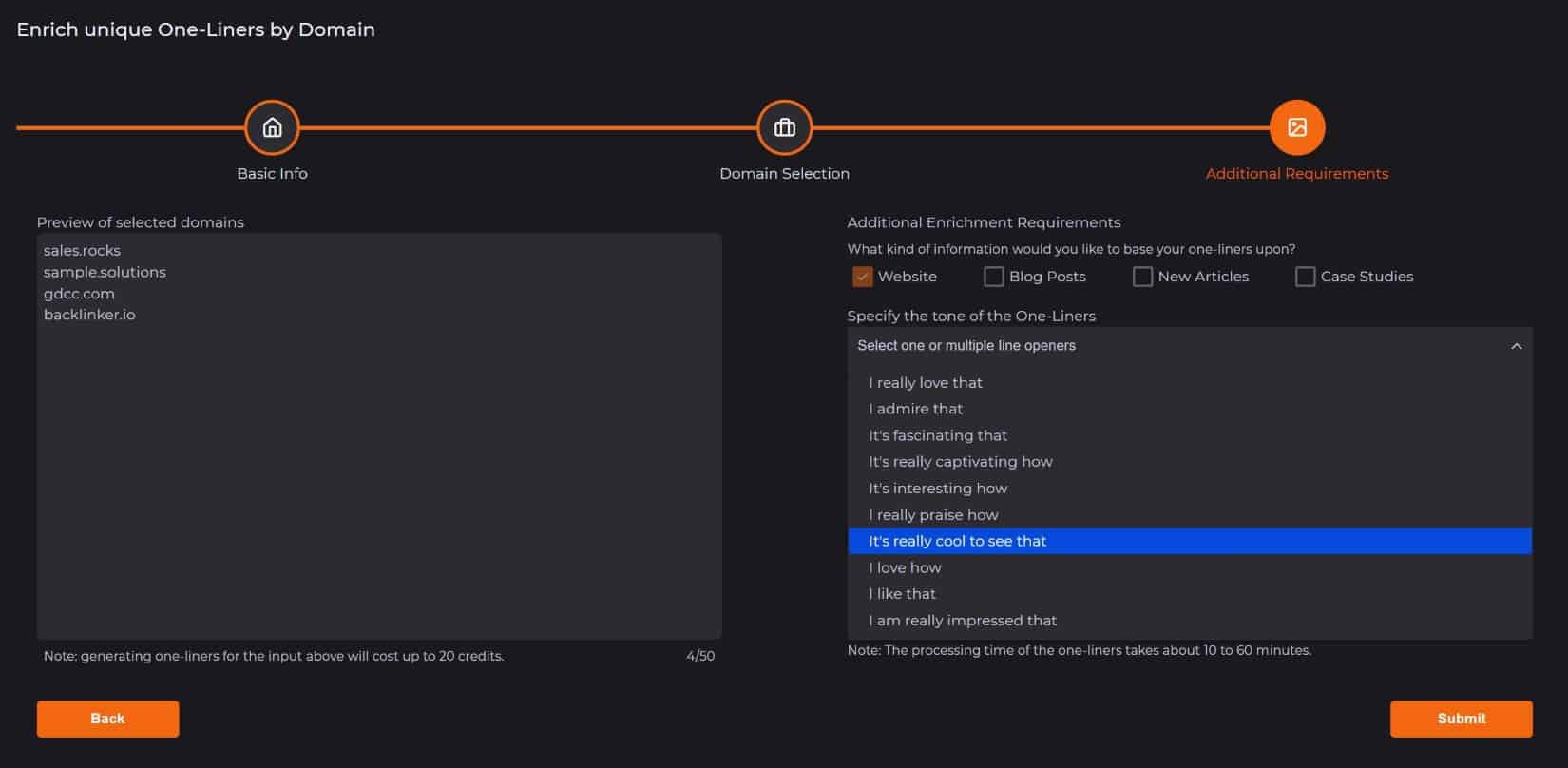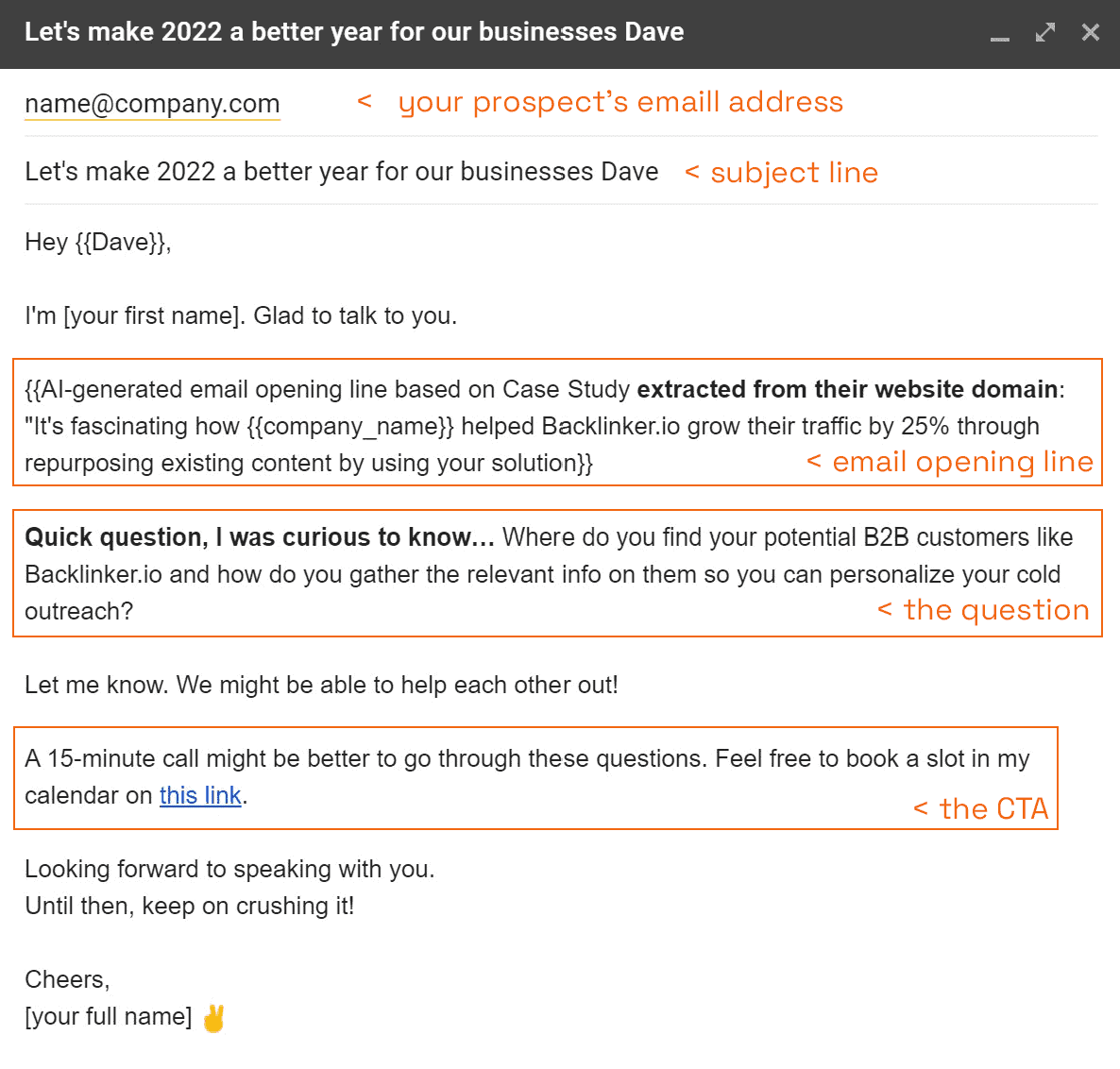Updated on February 10, 2022
Sales emails… not your favorite subject, right?
The art of writing an effective sales email that actually gets a reply is a discipline in its own right. And same as with any other professional field, it requires some skills polishing in order to master it.
A sales email is sent to a potential customer with the intent to draw their attention to your business offering, and also to verify that they truly check all the right boxes for becoming a paying customer.
Striving to write the perfect sales email (if such a thing exists) starts with thorough online research to find and target the right people and companies that fit your Ideal Customer Profile (ICP).
Then, you need to gather their email addresses and some additional information regarding their company and job role so you can personalize your message and create a meaningful context for further discussion. Not an easy task. But of crucial importance.
This article is meant to help you polish your sales email writing skills and avoid the most common mistakes sales reps are making in their cold email outreach. Or any sales email outreach for that matter.
1. Catch their attention with a Catchy & Clear Subject Line
The success of your email outreach starts with your email open rate. So unless your prospects open your sales email, there won’t be any sales. No-brainer.
And 47% of email recipients open an email based on the subject line. Or 69% of them report it as a SPAM, again, based on the subject line. I guess we can all agree that subject lines are kind of a big deal.
It’s the first and only thing your sales prospects can see when they receive your sales email in their inbox.
And since we receive hundreds of emails per day, catchy and clear email subject lines are more important now than ever.
There are two things you should take seriously:
- Your email subject line should be relevant to each recipient and motivate them to open your email.
- It should also match the content of the body of the email. In fact, this is a legal requirement of the CAN-SPAM Act in the US.
Then, there are a few things you can do with your subject line to increase your email open rate, such as:
– Ask a question to elicit curiosity (and the impetus to provide an answer);
– Present data-based insights on a specific industry pain-point they might struggle with;
– Mention a mutual connection (reading a familiar name makes it resonate with us. It’s true.
Here are some examples to get you started writing those email subject lines for your next sales emails:



Finally, make sure your entire subject line is visible on desktop and mobile. And try to include the prospect’s name as well. It’s the first layer of email personalization.
Pro Tip: Always A/B test your sales email subject lines!
Looking for inspiration on sales email subject lines? Tips for writing an engaging email subject line for sales [with examples]
2. Create a Personalized Opening Line for each prospect
Now that you were following our advice, worked carefully on your subject line and you know it will be opened, let’s focus on your email opening line.
The first, introductory line in your email body needs to persuade your valuable prospect to keep reading.
Email opening lines are also known as the Ice Breakers. They “break the ice” between you and your potential customer and establish a mutual ground to keep the conversation flowing.
Personalization plays a major role here, so try to open with a personalized one-liner that speaks to them.
Such as “It’s really captivating how {{you describe the SaaS Sales Metrics}} in your last blog post...”
or
“I’m really impressed that {{your company provides a data-reach platform that helps you find your ideal prospects}}…”
If you want to go the extra mile, you can tailor your opening line by referencing the recipient’s new role, their company receiving an award, or even entering a new market. This will require additional time and effort on your part to track the relevant Sales Triggers on your target accounts.
If you can’t get too personal, try just citing a relevant industry statistic.
Easier said than done? Actually, there is a hack…
How much time does it take to do the research and come up with an introduction line for each prospect on your list manually? I assume more than you would like to spend.
Luckily, there are sales automation platforms that boast features that can break the ice with your prospects for you in each email opening line – Meaningfully & Creatively.
Sales.Rocks’ AI sentence generator will help you write one-liners of personalization for your email openings, or even a suitable text excerpt for your email body and save your sales team the much-needed time & effort.
Here is more on the subject: How AI can help you write better email opening lines for your sales emails?

3. Keep the body copy of your sales email short and relevant
Hubspot’s research based on 40 million sales emails concluded that the ideal length of a sales email is in the sweet spot between 50 and 125 words. And another study from Boomerang found that the same length of sales emails had the best response rates at just above 50%.
Therefore, a concise, cold email sent to a busy decision-maker would be the best way to get your foot in the door. Here is how to write that sales email template in 3 key steps.
Sales Email Hack #1. Avoid talking about yourself
Save your compelling sales pitches for your second sales email – after you receive a response on this one (which will be sure to come if you’re following our guidance).
In your initial sales email, your buyer persona will be interested to know what you can do for them, not about how wonderful you and your company are.
Sales Email Hack #2. Always ask a question that aligns the research you’ve performed WITH your prospect’s goals and pain points.
After the warm and personalized introduction line, continue your cold sales email with a question that aligns YOUR business solution (and offering) with the assumed pain points and obstacles THEY are currently dealing with.
Here’re some examples of the questions we use here at Sales.Rocks in our outbound sales emails:
“Quick question, I was curious to know…
– How are you performing your outbound outreach right now?
– Do you leverage email automation? What’s your email provider?
– How many emails are you sending per day?
– Do you have the trouble of your emails landing in SPAM?
– Where do you find your potential B2B customers?
– How much time do you spend searching for the right contacts and their info?
– Are you aware that you can cut that time by half with the right sales automation tool?
– How do you get their valid email address and other contact info?
– How do you gather the relevant info on them so you can personalize your cold outreach?
– What sales tools are available for your Sales Development Representatives?
– What platforms are you using to reach your target audience? What channels?
– How much do you invest for the overall sales process your sales team goes through?
– Do you use only email or also LinkedIn for your sales outreach?
– Are you aware that you can cut your effort by half with a multichannel outreach?
– Are you doing your best to optimize your email opening lines?
– How that works for you in terms of open rates, click-through rates, and reply rates? …”
Do you see what we did there?
This way you are measuring their level of awareness in your solution, as you better understand their workflow and the main obstacles & bumps in the road they face in their current business process.
This is the best formula for setting the common ground and opening the dialogue for further discussion between you and your next customer when writing a B2B sales email.
Formulate your own questions depending on your own business needs, product, and service offering, and embrace yourself for a drastically increased response rate to your next cold email campaigns.
4. Email Closure: Include clear Sales Email CTAs and Next Steps
Now we’ve come to the final step – how to end your sales email.
Don’t make your potential customers guess what they should do next. Your sales email has to end with a very clear and simple call-to-action (CTA). Provide direction for the reader to keep the conversation going.
Do you want to have a quick disco call with them? Then write something like this: “A 15-minute call might be better to go through these questions. Feel free to book a slot in my calendar on this link.”
Or do you want to present a demo? – “Depending on your answers to my questions, naturally, you’ll have questions for me as well, and I want to answer them the best that I can. If this is the case, feel free to schedule a demo call on this link here.”
Here is an example of a well-written sales email template following all the 4 main sections we discussed above.

More Sales Email Templates?
Now go and write your next winning sales email.
Until next time. 🍀


